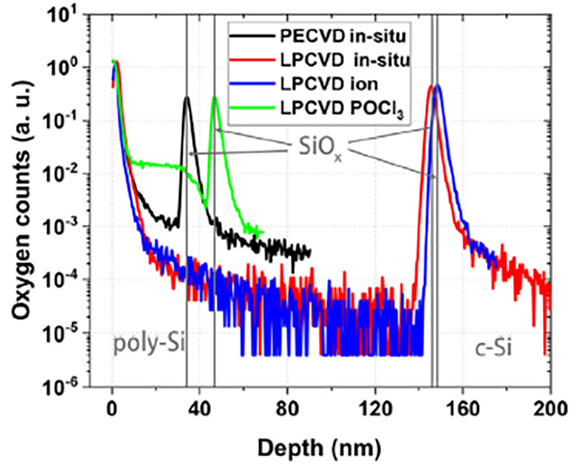
LG-SIMS
The Microscopy Australia Flagship Ion Probe Facility at UWA is home to the state-of-the-art CAMECA IMS 1280 instrument. The CAMECA IMS 1280 is a large geometry SIMS (Secondary Ion Mass Spectrometry) instrument tailored for performing in-situ isotopic measurements. The instrument boasts a routine spot size range of 10-15 μm, which can be further reduced to approximately 3 μm, albeit at the expense of precision. It is one of the most sensitive SIMS instruments and allows for the detection of signals down to the equivalent of parts per trillion concentrations for some elements.
What can LG-SIMS do?
Large Geometry Secondary Ion Mass Spectrometry (LG-SIMS) is a specialised technique that enables detailed analysis of material composition by measuring the concentration of elements and isotopes on a sample’s surface, with high lateral resolution and precision. This technique is particularly useful in research fields, such as materials science, geology, biology, and nuclear forensics.
Scientific analyses:
- U-Pb in zircon – spot analyses and ion imaging.
Scientific analyses:
- S isotopes in sulphides (pyrite, pyrrhotite, chalcopyrite and pentlandite) and apatite (S>1000ppm)
- O isotopes in silicates (quartz, zircon, garnet) and calcite
- C isotopes in calcite
Scientific analyses:
- Depth profiles in materials with a nm-scale spatial resolution.
Scientific analyses:
- U isotopes measurement in environmental samples.
Our applications

Nuclear forensic
Since 2012, UWA has utilised the LG-SIMS technique for uranium isotopic analysis of particles found in environmental samples provided by the International Atomic Energy Agency (IAEA). The IAEA’s mission is to deter the proliferation of nuclear weapons by detecting any misuse of nuclear material or technology early and providing credible assurances that States are meeting their safeguards obligations. The LG-SIMS technique serves as a powerful tool for isotopic “fingerprinting” of individual uranium particles and may, in the future, be validated for the analysis of plutonium particles as well.

Geochronology
Equipped with the latest generation of oxygen ion source (RF-plasma) from CAMECA, U-Pb dating in zircon can be performed with a 5 to 10 µm in size beam, allowing to reach small domains in complex zircon grains without compromising accuracy and precision. Ion imaging can be used to derive more accurate dates in overly complex zircon grains or identify processes generating complex date dataset.
Stable isotope geochemistry
Stable isotope geochemistry offers valuable insights into the growth environments of minerals, enhancing our understanding of diverse processes, from ore deposit formation and the origins of Earth’s earliest crust to the development of our atmosphere.

Material sciences
The purpose of Depth Profiling is to gather information about how composition varies beneath the initial surface. This information is particularly valuable for analysing layered structures, such as those commonly found in the semiconductor industry.

Facility access
Microscopy Australia provides access to its flagship high-end instruments and analytical techniques to the Australian research community.
Applying for access
Application reviews occur in the month following each deadline. We encourage you to contact us prior to applying to discuss feasibility. Applications are assessed based on feasibility, instrument availability, and scientific merit.
Application deadlines occur 3 times per year at fixed dates:
- 15 Feb for time allocated during the next May to August block.
- 15 Jun for time allocated during the next September to December.
- 15 Oct for time allocated during the next January to April.
If you are interested in working with our laboratory, please send your application to us via a link to [email protected].
Can't find what you’re looking for?
Contact us and one of our experts will get back to you.
FAQ
-
What key guidelines should I follow to prepare my sample for analysis with the CAMECA IM 1280?
Samples to be analysed must fit into a 1-inch-diameter sample holder and must be polished flat. It is common to embed samples within resin (or use indium when analyses are vacuum-sensitive) before polishing to make a mount. Resin or indium mounts should not exceed 4 mm in thickness.
-
How do I polish my sample for the CAMECA IMS 1280?
The surface of the sample must be polished flat to enhance electrical conductivity and minimize any relief. This is typically achieved through mechanical polishing using diamond suspension products with decreasing particle diameters, typically 9, 3, and 1 μm.
-
What kind of samples can be analysed with the CAMECA IMS 1280?
Various types of samples can be embedded in resin, such as thin/thick sections, rock chips, and crystals, but they require different sample preparation procedures. Please get in touch if you need guidance.
-
Can I spread my samples across the mount?
For SIMS analyses with the CAMECA IMS 1280, it is recommended to place the sample or region of interest as close to the centre as possible. Although we use the large sample holder from CAMECA, our experience has shown that for result accuracy, it is safer to keep both samples and RM within 5-6 mm from the centre of the mount.
-
Do I have to include reference materials together with my samples in my mounts?
It is preferable to have reference material (RM) grains embedded within the mount, along with sample chips or grains. RM grains should be in the centre of the mount and, if possible, on the edge of the sample grains.

The different mount holder available in our laboratory for analyses with the IMS1280.

Analysis area by SIMS O and S isotopes 5mm from centre
Platform experts
Dr Laure Martin
Senior Lecturer (SIMS), Centre for Microscopy, Characterisation & Analysis
Dr Luis Parra-Avila
Senior research officer Geoscience application by SIMS, Centre for Microscopy, Characterisation & Analysis
Mr Matvei Aleshin
Nuclear Forensic specialist, Centre for Microscopy, Characterisation & Analysis

